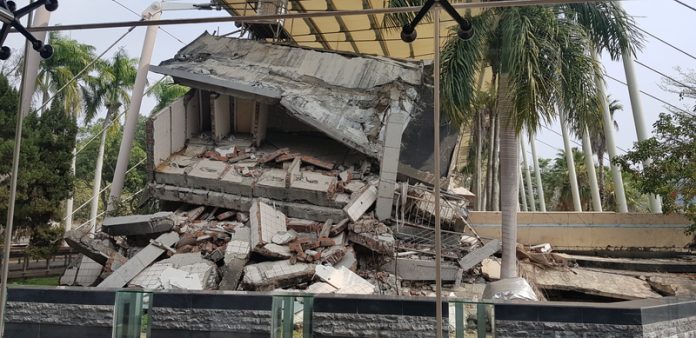The current status of Earthquake Early Warning System (EEWS) in Taiwan is detailed here by Pei-Yang Lin, Research Fellow at the National Center for Research on Earthquake Engineering
In Taiwan, there are two kinds earthquake early warning system (EEWS) developed for people, the first one was called the regional EEWS developed by Central Weather Bureau (CWB) and the other was the on-site EEWS developed by The National Center for Research on Earthquake Engineering (NCREE). When the earthquake event occurs, the wave propagates and the relative signal will be detected by seismometers which are closest to the epicentre and the regional EEWS collect this data to estimate the essential parameters, such as the epicentre, earthquake magnitude and intensities for influence area, etc. Then, a data centre collects the essential parameters and finally, publishes the warning information.
To wait for the data, transmission from seismometers and collection for analysis procedures will be costly in terms of time, in that they will delay the warning. When the earthquake event occurs inland, for example, transmission and analysis works will be about 16~20 secs when it comes to a warning. However, the seismic wave still propagating at the same time means that the influenced areas near the epicentre (influence radius small than 70 km) cannot receive the warning. Such influenced areas are also called the blind zone. The on-site EEWS was developed to reduce the blind zone, based on detecting the P-wave (1-3 secs) by only using an on-site seismometer to predict the earthquake essential parameters for publishing. Because the on-site EEWS doesn’t need the transmission from several seismometers in different sites, the areas near the epicentre can receive the warning information early. The on-site EEWS can decrease the blind zone.
According to the earthquake events data during 2013-2018, the influence radius was reduced to less than 30 km. And there were several successful cases which can be found in a database of on-site EEWS, which can activate the broadcast system in schools to notify people automatically to respond in the event of an emergency.
Customised on-site EEWS
The proposed on-site EEWS can further serve the users with vibration-sensitive equipment, by providing more local, detail and accurate seismic vibration prediction and the automatic disaster reduction control system in advance. It cost $160,000~$200,000, and the target users include high-tech plants, high-speed rail, power plants …etc. In the 2016 Meinong earthquake, the on-site EEWS succeeded in providing the famous semiconductor company in Taiwan an early warning and activated the related emergency responses to reduce seismic loss.
Considering the high costs of the on-site EEWS, NCREE developed another business model for EEW service. People or government can install one on-site EEWS and message server in a small area (~20 km radius). As the seismic intensity is similar inside the area, thousands of users inside the area can share the same early warning message with a low-cost receiver. This kind of application is suitable for the seismic hazard area which needs a warning system urgently. Only after several months of installation, can the EEWS serve thousands of users.
Applications of EEW for smart-technology
During the past few years, NCREE provided the total solution of seismic disaster reduction. Before the main shake, the EEWS can provide the warning info and activate the disaster reduction control, such as shut-off the gas, open the door, stop the elevator…etc. During the shake, the seismic-proof table and safety area provides people with a strong shelter. After the shake, the structural health monitoring system (SHM) can provide the structure healthy condition and safety report to help people carry out the post-earthquake response (return or leave the damaged structure) quickly.
In 2017, NCREE applied the on-site EEWS and SHM and in an office building in central Taiwan science park. The whole system also had been validated on the full-scale RC building shake table test. In 2018, NCREE cooperative with CWB to apply the EEWS +SHM to 10 building structures. We want to use these demonstrations to promote the proposed disaster-privation system, and wish it can be widely deployed in the near future.
Please note: This is a commercial profile
Pei-Yang Lin
Research Fellow
National Center for Research on
Earthquake Engineering
Tel: +886 2 6630 0895
pylin0823@gmail.com; pylin@narlabs.org.tw
www.ncree.org













